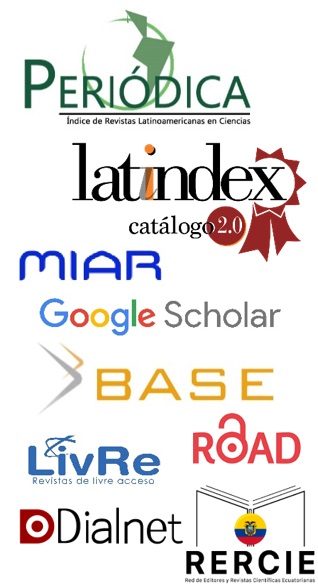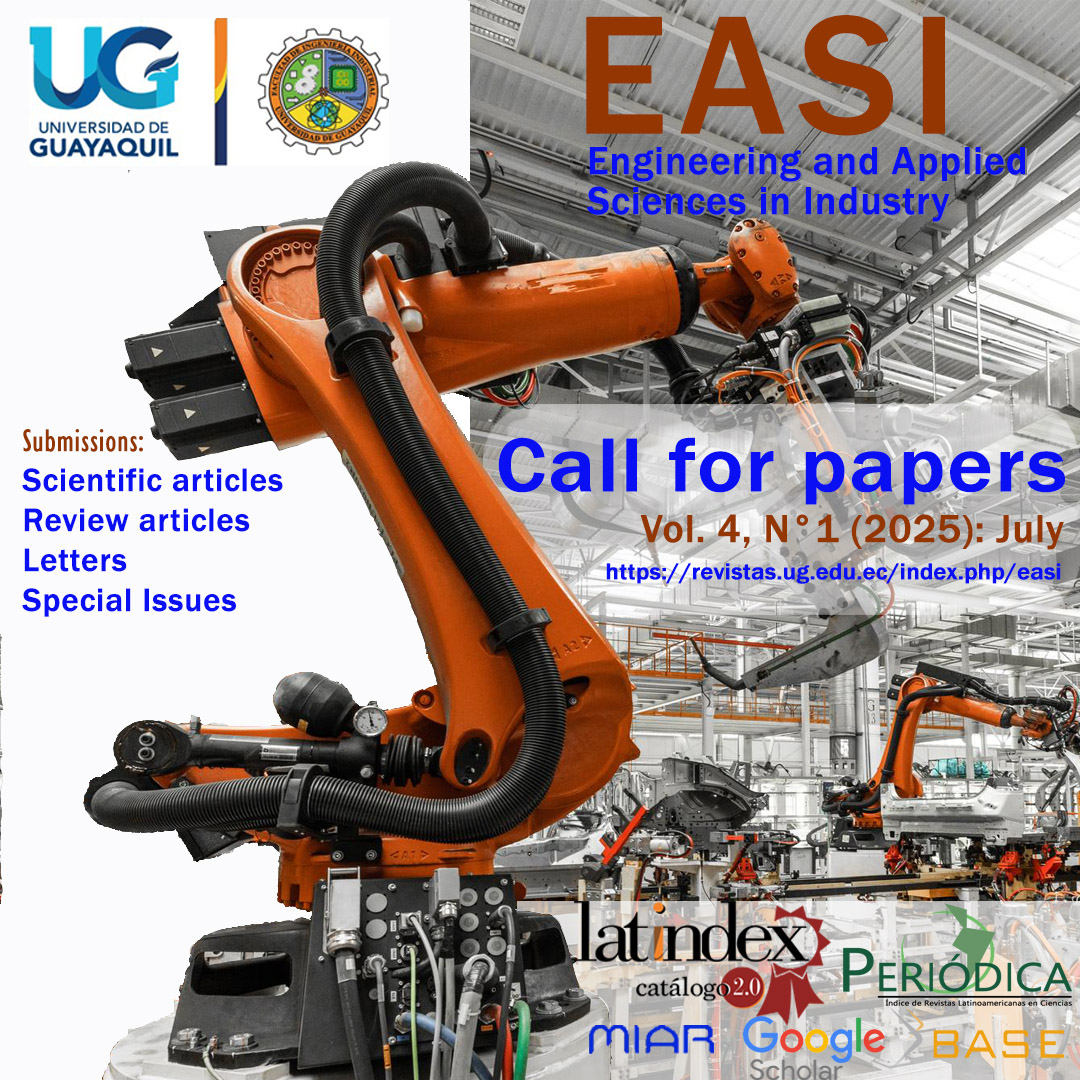Statistical analysis of vehicle accidents in the city of Ibarra over the period 2017-2022
DOI:
https://doi.org/10.53591/easi.v2i1.2045Keywords:
Vehicle accident, Human factor, EcuadorAbstract
A relevant fact in the city of Imbabura is the result of traffic accidents. In some of these events people are reported injured and in extreme cases deceased. This situation should be minimized in order to avoid consequences. In pedestrians, drivers and the community in general. Considering the above, it is important to identify the causes of traffic accidents in the city, by performing a detailed analysis of the factors that influence the occurrence of these events. For this purpose, the analysis of statistical data obtained in the period 2017-2022 by the state entities, for traffic accidents considering the main data carried out at the time the accidents happen, is exposed. The qualitative method was chosen to obtain conclusions from heterogeneous and unstructured data that are not detailed numerically. Based on the information collected, human factors were identified as key elements, specifically alcohol consumption, speeding and disrespect for traffic regulations. With respect to the areas of the city with the highest number of accidents, it was determined that they correspond to the areas surrounding the Amazonas Market and the Stadium; while the highest incidence of accidents occurs on weekends.
References
Asamblea Mundial de la Salud, A. M. (2018). Mejora del acceso a la tecnología de asistencia: informe del Director General (No. A71/21). Organización Mundial de la Salud. Recuperado de https://apps.who.int/iris/bitstream/handle/10665/276438/A71_21-sp.pdf.
Cabezas, E., Andrade, D., & Torres, J. (2018). Introducción a la metodología de la investigación científica. Universidad de las fuerzas Armadas ESPE, 138. Recuperado de https://acortar.link/ZSwUX0.
Castillo, D., Coral, C., & Salazar Méndez, Y. (2020). Modelización Econométrica de los Accidentes de Tránsito en el Ecuador. Revista Politécnica, 46(2), 21-28. https://doi.org/10.33333/rp.vol46n2.02.
Cegarra J. (2012). Los métodos de investigación. Ediciones Díaz Santos. Madrid-España. Consultado, 13.
Campón, J. (2017). Manual de Investigación de Siniestros Viales, Escuela de Tráfico de la Guardia Civil. Ministerio del Interior-Dirección General de Tránsito. Recuperado de Ecuadorcifras.gob.ec: https://www.ecuadorencifras.gob.ec/documentos/web-inec/Estadisticas_Economicas/Estadistica%20de%20Transporte/2021/trimestral/NOTA%20T%C3%89CNICA_ESTRA_SINIESTROS_IITRIMESTRE2022.pdf.
Estadísticas de Transporte Siniestros de Tránsito (2021). Recuperado de https://www.ecuadorencifras.gob.ec/documentos/web-inec/Estadisticas_Economicas/Estadistica%20de%20Transporte/2021/2021_SINIESTROS_PPT.pdf
Fajardo-Escolar, A., Perea-Bello, A. H., & Hidalgo-Martínez, P. (2017). Manejo perioperatorio del paciente con síndrome de apnea-hipopnea obstructiva del sueño (SAHOS). Revista de la Facultad de Medicina, 65, 81-85. Recuperado de https://doi.org/10.15446/revfacmed.v65n1Sup.59568.
Gómez García, A. R., Russo Puga, M., Suasnavas Bermúdez, P. R., Celín Ortega, F. A., Chérrez Miño, M. C., & González Jijón, L. A. (2016). Caracterización de la mortalidad por accidentes de tránsito en Ecuador, 2015. Recuperado de https://repositorio.uisek.edu.ec/bitstream/123456789/3003/1/19.%201390-9592%20GOMEZ%20ANTONIO%202015-02.pdf.
Mejía, M. (2018). Metodología de la investigación.
Ortega, J. F. O., Uvidia, R. N. V., & Salazar, M. E. S. (2017). Determinación de las variables para valorar el costo por muerte en accidentes de tránsito. Recuperado de https://www.eumed.net/rev/caribe/2017/03/accidentes.html.
Peden, M. M. (Ed.). (2004). Informe mundial sobre prevención de los traumatismos causados por el tránsito (No. 599). Pan American Health Org.
Published
How to Cite
Issue
Section
License
Copyright (c) 2023 Carlos Santana , Anthony Maldonado, Fabio Cabascango, Bryan Guerrero, Gabriel Quelal, Brizeida Gamez

This work is licensed under a Creative Commons Attribution-NonCommercial-NoDerivatives 4.0 International License.
Contributions published in the EASI journal follow the open access license CC BY-NC-ND 4.0 (Creative Commons Attribution-NonCommercial-NoDerivs 4.0). This license empowers you as an author and ensures wide dissemination of your research while still protecting your rights.
For authors:
- Authors retain copyrights without restrictions according to CC BY-NC-ND 4.0 license.
- The journal obtains a license to publish the first original manuscript.
For readers/users:
Free access and distribution: Anyone can access, download, copy, print, and share the published article freely according to the license CC BY-NC-ND 4.0 terms.
Attribution required: If any third party use the published material, they must give credit to the creator by providing the name, article title, and journal name, ensuring the intellectual property of the author(s), and helping to build the scholarly reputation.
Non-commercial use: only noncommercial use of the published work is permitted. Noncommercial means not primarily intended for or directed towards commercial advantage or monetary compensation by any third party.
No modifications allowed: The content of the published article cannot be changed, remixed, or rebuilt upon the author’s work. This ensures the integrity and accuracy of the research findings.



